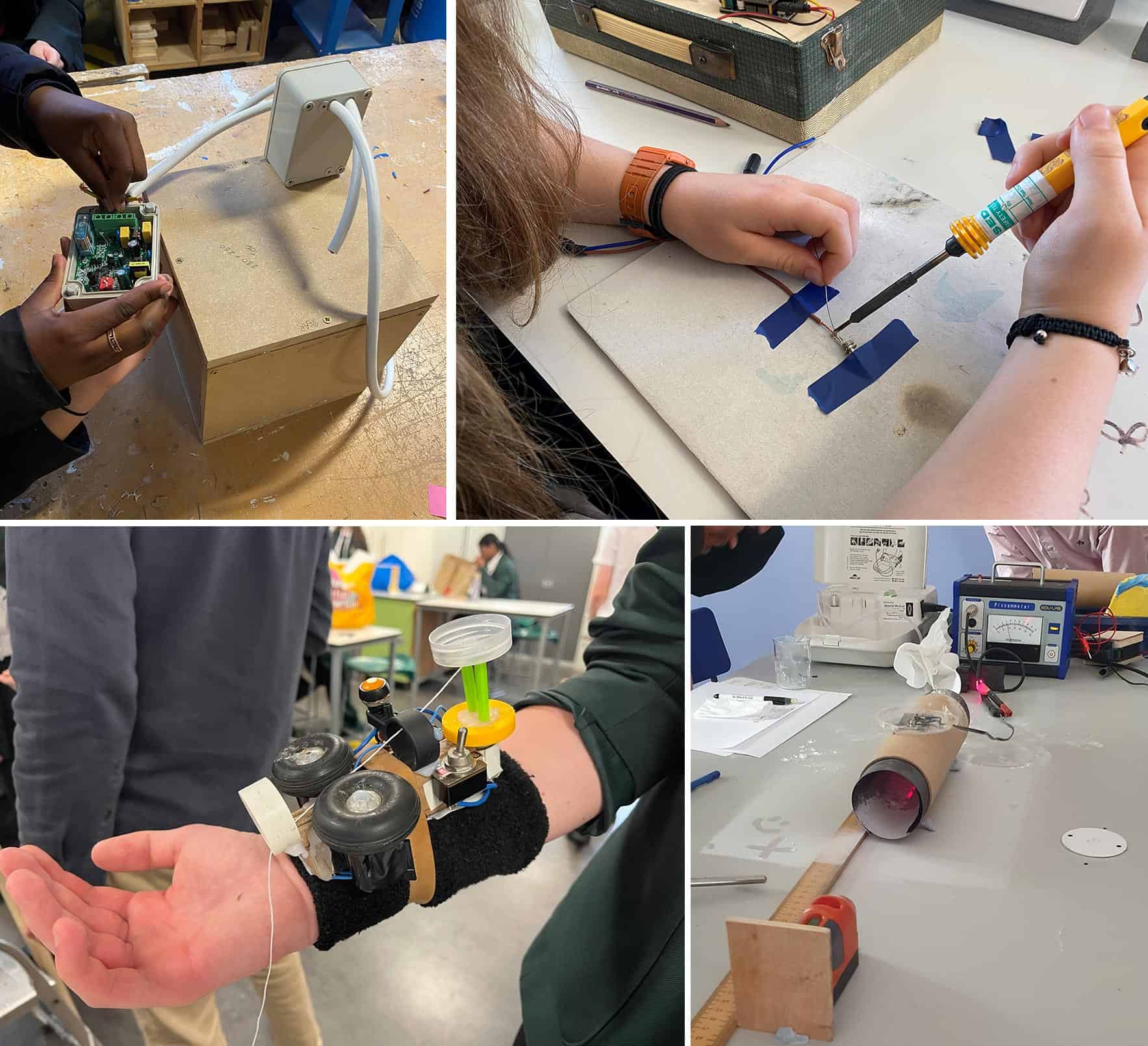Science
Students Innovate to Address Physics Education Crisis

Challenges in physics education have prompted calls for innovative teaching methods to engage students and enhance their understanding of the subject. According to Neil Downie, a physicist with a rich background in both academia and industry, fostering a hands-on approach in schools is essential for inspiring the next generation of physicists.
Downie reflects on his own experiences, noting that his passion for physics began with projects he created during his youth. He designed electronic circuits and even built a gas chromatograph, experiences that ultimately led him to earn a physics degree from the University of Oxford and contribute to groundbreaking research at the DESY lab in Hamburg.
Despite the potential for a fulfilling career in physics, Downie emphasizes that many students do not share his enthusiasm. He identifies a significant issue in physics education: a lack of engagement among both students and teachers. This “future of physics” problem has been a persistent concern, impacting not only the subject of physics but also various fields that rely on its principles.
The Institute of Physics highlighted these challenges in its March 2024 report, “Fundamentals of 11 to 19 Physics.” The report suggests integrating more practical elements into physics lessons and encourages students in England, Wales, and Northern Ireland to pursue AS-level physics after their GCSEs. Such steps are seen as vital for students interested in science or technical studies, ensuring they possess the necessary skills for A-level physics.
While these recommendations mark progress, Downie advocates for a more transformative approach. He believes that allowing students to invent, build, and test their own projects could significantly enhance their learning experience. This hands-on method, ideally introduced before GCSE level, would foster enthusiasm and provide a solid foundation for future studies in physics.
Students would benefit from what Downie describes as “pull learning,” where they actively seek knowledge and engage with the subject matter. He argues that this approach not only deepens their understanding of physics but also cultivates essential life skills such as teamwork, analysis, and effective communication.
Throughout his career, Downie has engaged with students in various outreach initiatives, including running a Saturday Science club in Guildford, Surrey. He has witnessed firsthand the creativity students bring to projects, with some developing innovative ideas like an ultrasonic scanner for detecting moisture in fabric and a system that uses LEDs to teach guitar.
Downie has also collaborated with teachers to encourage project-based learning among 14- to 15-year-olds. In group settings, students brainstorm ideas, sketch designs, and research their projects. A-level students often assist in this process, gaining valuable teaching experience while reinforcing their own understanding of physics.
The outcomes of these initiatives have been promising. Students demonstrate ingenuity and inventiveness, as evidenced by projects that combine knowledge from various physics disciplines. For example, a project involving sensors often also incorporates electronics, enhancing students’ grasp of both areas.
Some educators may raise concerns about assessing such projects, but Downie suggests that grading should not be the focus. Instead, he argues that the enthusiasm and learning generated from innovative projects will naturally translate into improved exam results. By removing the pressure of evaluation, more students may be encouraged to pursue physics further, potentially leading to qualifications that deepen their understanding of the subject.
Ultimately, Downie envisions a future where more students carry their passion for physics into diverse career paths, including engineering, medicine, research, and teaching. He asserts that project-based learning should be embraced as a key strategy in addressing the ongoing challenges facing physics education.
In summary, revitalizing interest in physics through student-led projects could play a crucial role in solving the education crisis in this vital discipline. By empowering young minds to explore and experiment, educators can foster a new generation of physicists ready to tackle the challenges of tomorrow.
-

 Health3 months ago
Health3 months agoNeurologist Warns Excessive Use of Supplements Can Harm Brain
-

 Health3 months ago
Health3 months agoFiona Phillips’ Husband Shares Heartfelt Update on Her Alzheimer’s Journey
-

 Science2 months ago
Science2 months agoBrian Cox Addresses Claims of Alien Probe in 3I/ATLAS Discovery
-

 Science2 months ago
Science2 months agoNASA Investigates Unusual Comet 3I/ATLAS; New Findings Emerge
-

 Science1 month ago
Science1 month agoScientists Examine 3I/ATLAS: Alien Artifact or Cosmic Oddity?
-

 Entertainment5 months ago
Entertainment5 months agoKerry Katona Discusses Future Baby Plans and Brian McFadden’s Wedding
-

 Science1 month ago
Science1 month agoNASA Investigates Speedy Object 3I/ATLAS, Sparking Speculation
-

 Entertainment4 months ago
Entertainment4 months agoEmmerdale Faces Tension as Dylan and April’s Lives Hang in the Balance
-

 World3 months ago
World3 months agoCole Palmer’s Cryptic Message to Kobbie Mainoo Following Loan Talks
-

 Science1 month ago
Science1 month agoNASA Scientists Explore Origins of 3I/ATLAS, a Fast-Moving Visitor
-

 Entertainment2 months ago
Entertainment2 months agoLewis Cope Addresses Accusations of Dance Training Advantage
-

 Entertainment3 months ago
Entertainment3 months agoMajor Cast Changes at Coronation Street: Exits and Returns in 2025









